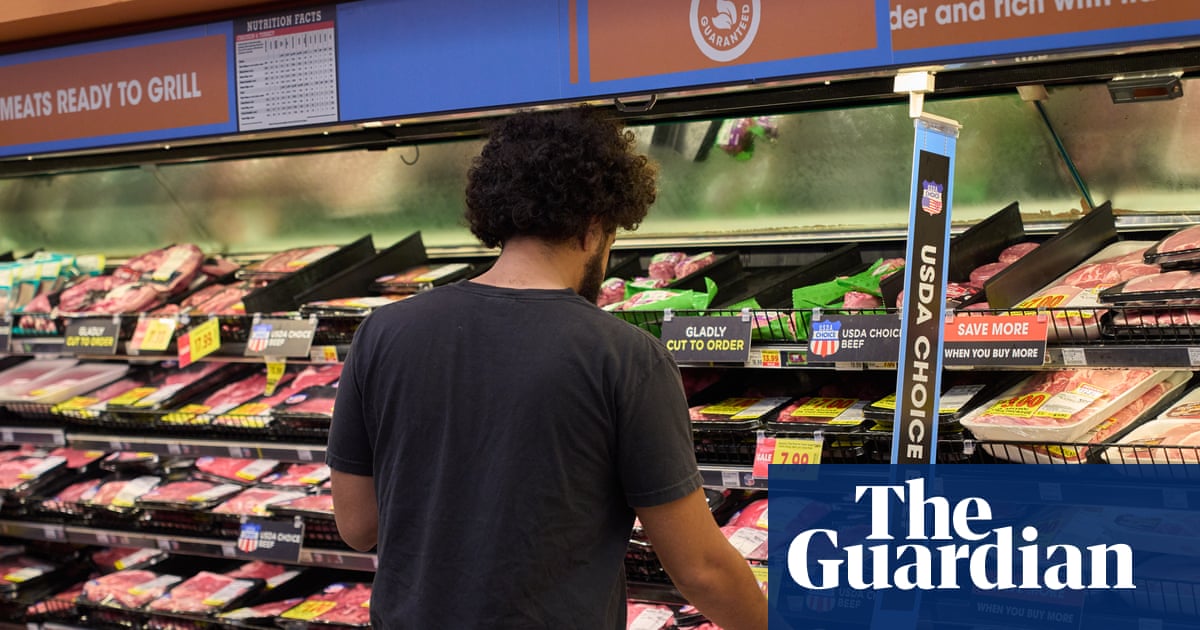Beef Prices Soar to Unbelievable Heights: What This Means for Your Dinner Plate!

Brace yourself, beef lovers! If you thought filling your dinner plate with your favorite steak was pricey before, get ready for a shocking reality—beef prices have skyrocketed to record highs, and there’s no sign of relief in sight!
In August, ground beef hit a staggering $6.32 a pound, marking a jaw-dropping 13.9% increase from the previous year. To put this into perspective, that’s a significant leap compared to the overall inflation rate of just 2.9%. What’s driving this beef boom? Well, it’s a classic tale of tight supply meeting insatiable demand, leaving consumers and farmers alike feeling the pinch.
Years of low prices, rising costs of cattle rearing, and devastating droughts have led ranchers to drastically reduce their herds to levels not seen since 1951. Current live cattle futures have surged to a dizzying $243.58 per hundredweight—equivalent to ten bucks for every 100 pounds of beef. It’s a tough pill to swallow, but there’s a reason for ranchers’ reluctance to expand their herds.
David Anderson, a livestock specialist at Texas A&M University, explains that the last time cattle prices soared in 2014, ranchers quickly increased their herds, only to watch prices plummet shortly after. Now, with ranchers making well over $500 per head selling cattle, many are understandably hesitant to invest in breeding new ones.
Brett Kenzy, a South Dakota rancher with a herd of 2,700, expresses a common sentiment among ranchers: “We have much better prices, but I see a real lack of confidence in the market.” This hesitation is echoed by Narciso Perez, a cattle broker in New Mexico, who sees high prices as a chance to finally pay off long-standing debts rather than an opportunity to reinvest in livestock. “I can pay all my bills off today,” he says, reflecting a cautious optimism after two decades of struggles.
Even if ranchers were to start expanding their herds today, they would face a lengthy wait, as it typically takes up to four years to raise cattle ready for slaughter. Anderson emphasizes, “Biology is tough to beat.” Meanwhile, the recent decision to close the Mexican border to cattle imports to combat a flesh-eating fly has further compounded the beef shortage. With domestic supplies dwindling, the prices are sure to climb.
The tightening cattle supply is also squeezing the profits of major meat processors like Tyson, JBS, and Cargill, all of whom are reporting lower earnings this year. Additionally, consumer trends are shifting; while people are eating less of traditional roasts, demand for premium cuts, which are more expensive to produce, is on the rise.
Interestingly, 50% of U.S. beef consumption consists of ground beef, and with tariffs increasing on imported beef from places like Brazil, the cost of your next burger is set to climb. Restaurant owners are feeling the heat as well, having no choice but to pass these costs onto diners. Leonard Botello, owner of Truth BBQ in Texas, recalls paying just $2.50 per pound for prime brisket a decade ago—now he’s shelling out around $8, leading to menu prices soaring from $18 to $37 for brisket.
Jason Vincent, who owns three restaurants in Chicago, recently saw his beef costs rise by $3 a pound. “You want to offer value, but, honestly, that’s out the window,” he laments. Yet, despite the price hikes, Americans are not shying away from beef; it remains a staple on our plates, even as the prices continue to outpace those of pork or chicken.
As the fear of “demand destruction” looms over producers, Anderson warns that consumer income will be a critical factor. If a recession hits, will we still be willing to fork out for that juicy steak?






















